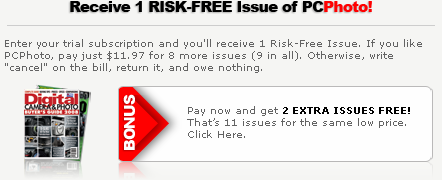The X Factor
What you need to know about memory-card speed
 It used to be that a small group of people, such as pro photographers, needed high-speed cards. But as manufacturers develop higher-resolution cameras, file sizes are growing larger and therefore taking longer to record to a memory card. Using a high-megapixel camera with a standard-speed card creates a lag time between shots because of a slow write speed and lengthy download times to your computer because of a slow read speed.
It used to be that a small group of people, such as pro photographers, needed high-speed cards. But as manufacturers develop higher-resolution cameras, file sizes are growing larger and therefore taking longer to record to a memory card. Using a high-megapixel camera with a standard-speed card creates a lag time between shots because of a slow write speed and lengthy download times to your computer because of a slow read speed. CompactFlash and Secure Digital are the memory-card formats typically categorized by the x factor. Secure Digital High Capacity (SDHC) speed class ratings are standardized and more objective. All SDHC cards that are Class 4, for example, can write at the speed of 4 MBps. Class 6 cards write at a minimum of 6 MBps.
CompactFlash and Secure Digital are the memory-card formats typically categorized by the x factor. Secure Digital High Capacity (SDHC) speed class ratings are standardized and more objective. All SDHC cards that are Class 4, for example, can write at the speed of 4 MBps. Class 6 cards write at a minimum of 6 MBps. ATP ProMax II CompactFlash cards (atpinc.com) deliver read speeds of up to 45 MBps and write times of up to 30 MBps. The cards are UDMA-compliant and have capacities of up to 16 GB. Estimated Street Price: $185 (8 GB).
Kingston’s 32 GB Elite Pro SDHC memory card (kingston.com) has a Class 4 speed rating and is particularly useful for shooting high-definition video. Estimated Street Price: $247.
 Lexar (lexar.com) has upgraded several of its cards, including the UDMA-compliant Professional 300x 16 GB CompactFlash card featuring a 45 MBps write speed. The Professional 233x CompactFlash cards come in 2, 4 and 8 GB capacities with 35 MBps read/write times. Estimated Street Price: $359 (16 GB CF).
Lexar (lexar.com) has upgraded several of its cards, including the UDMA-compliant Professional 300x 16 GB CompactFlash card featuring a 45 MBps write speed. The Professional 233x CompactFlash cards come in 2, 4 and 8 GB capacities with 35 MBps read/write times. Estimated Street Price: $359 (16 GB CF).The PNY 16 GB Class 6 Optima Pro SDHC card (pny.com) has a 6 MBps transfer rate, ideal for high-megapixel cameras and demanding camcorders. Estimated Street Price: $119.
With a 30 MBps transfer rate, the SanDisk Extreme III 32 GB CompactFlash card (sandisk.com) doesn’t sacrifice speed for capacity. Estimated Street Price: $199.
Page 2 of 2
Labels: Memory Cards, Gear

























centgram makes this comment
Saturday 21 March, 2025
Maureen makes this comment
Thursday 5 March, 2025